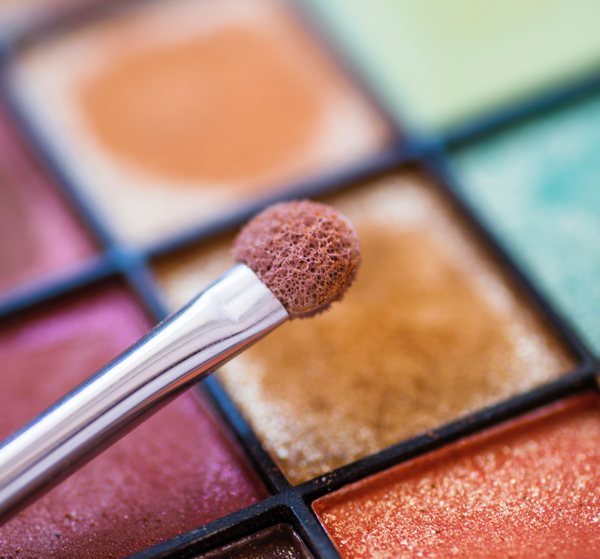Understanding Mica and Mica Powder?
Mica is a group of 37 naturally occurring minerals that have a unique crystalline structure. It's known for its properties of being lightweight, translucent, resistant to heat and electricity, and flexible.
In terms of aesthetics, mica exists in a variety of different colors and has a distinct sheen that makes it desirable for artistic purposes. Because of this, it is often turned into mica powder, a dry, non-soluble pigment ideal for providing long-lasting coloration with vivid hues.
What Is Mica Powder?
Mica powder is created when mica is ground into a fine dust. The resulting particles retain their color and shine, enabling them to be used in various ways due to their shimmering, pearlescent qualities. These qualities make it valuable to different industries, from art and design to beauty and cosmetics.
Mica powder comes in a variety of colors from vibrant hues to pale neutral tones, there's little that can't be achieved. These vivid mica powder shades are derived from the mineral's natural properties, as well as the addition of other pigments during the grinding process. Mica powder is also safe to use in most instances, but it's essential to understand more about any product before using it.
In its natural state, mica is a relatively safe substance. However, like any substance, it can cause health issues if misused or used in large quantities.
Occasionally, a colorful compound may be used to achieve more intense colors—such as certain shades of green. In turn, the powder pigment may be considered unsafe for lip use or accidental ingestion. Therefore, it's crucial to use mica powder responsibly and in the right contexts.
With this understanding, let's take a look into the common uses of mica powder.
Common Uses for Mica in Art and Design
Mica powder, a colorful, shimmery appearance, is a popular choice in the world of art and design. Artists and designers love using mica powder to bring a unique, sparkly effect to their creations. It's frequently used in soap making, resin art, jewelry making, and even in mixed media art pieces.
Aside from adding a visual pop to art and design projects, mica powder brings other benefits. It's easy to work with, and because it's lightweight, it doesn't weigh down the artwork. Moreover, it's resistant to heat, which makes it a great choice for projects that involve high temperatures, such as candle-making or pottery.
However, while mica powder brings a lot of benefits to the table, it's not devoid of challenges. When working with mica powder, it's wise to take basic steps to prevent inhalation, as large quantities can be harmful. Fortunately, a simple precaution such as wearing a KN95 or N95 mask will negate this concern.
Next, we consider how the beauty industry uses mica to produce stunning cosmetic products.
The Use of Mica in Beauty Products
Mica powder is a common ingredient in beauty products. Its glittery properties make it an excellent additive in cosmetics like eyeshadows, blushes, lipsticks, and even body lotions. It's what gives that shimmer and shine in many of your favorite products.
In general, mica is considered safe for topical use. However, like any ingredient, it may cause reactions in people with sensitive skin or certain allergies. That being said, skin contact with mica isn't cause for concern for most people.
Debunking Myths: Is Mica Safe for Skin?
Is mica safe for skin?—that's a common question. The short answer is yes, mica is generally safe for skin, though this is worth more consideration.
Mica powder, when used in cosmetics, typically goes through a rigorous process to ensure it's safe for skin application. This process can involve purification and testing for heavy metals or bacteria. Moreover, mica used in cosmetics can be coated with a substance like silicon to prevent any possible irritation.
However, it's always recommended to do a patch test if you are using a product with mica for the first time. People with sensitive skin or allergies might react to mica-based products. Therefore, if you experience any irritation, discontinue use immediately.
When using mica powder pigments to make your own cosmetics, it's important to know what colorful additives have been blended with the mica particles to achieve the tones you're interested in, as some additives are only safe for certain cosmetic applications.
How Additives Can Affect the Safety of Mica Powders
Additives can significantly affect the safety of mica powders. For instance, some mica powders are colored using other natural minerals or synthetic compounds, some of which can cause skin irritation or allergic reactions in people with certain sensitivities.
Certain compounds may be classified as unsafe for particular uses. For example, chromium oxide green, an inorganic compound that occurs in nature, is often added to mica powder pigments to generate green hues. However, these vivid tones come with a drawback, as it is considered not safe for lip use. Thus, mica powders containing chromium oxide green shouldn't be used in lip cosmetics.
Also important to consider is the quality of the mica powder. Cheaper, lower-grade mica powders may not be purified thoroughly, leading to the presence of harmful substances such as heavy metals.
When buying mica powder, stick with premium-quality pigments.
Pigmently: Your Trusted Source for Premium Mica Powder
At Pigmently, we've committed ourselves to offering only top-notch mica powders for DIY creators of any skill level. Each of our pigments is carefully produced to an exacting formula, using only high-grade ingredients to ensure a clean, potent, and vibrant result.
We know how important it is to have a trustworthy, reliable source of the supplies you need, and that includes mica powder. That's why you'll find a wide array of premium mica powders in our store.
If you find yourself in search for—or interested in—multiple shades, consider our curated Colorant Value Bundles, which are cost-effective ways to obtain a variety of colorful mica powder pigments.
Bring your creations to life with premium Mica Powder Pigments by Pigmently!



